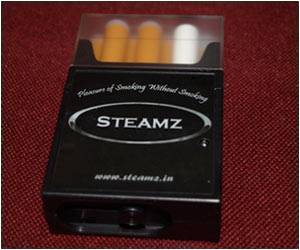The use of electronic cigarettes with higher nicotine concentrations was associated with a greater likelihood of subsequent use of cigarettes and e-cigarettes.

‘E-cigarettes are popular among teens and are now the most commonly used form of tobacco among youth. Their easy availability, alluring advertisements, various e-liquid flavors, and the belief that they're safer than cigarettes have helped make them appealing to this age group.’





Adam M. Leventhal, Ph.D., of the University of Southern California Keck School of Medicine, Los Angeles, and coauthors examined associations between baseline e-cigarette nicotine concentration levels vaped (from none to 18 mg/mL or more) and the subsequent frequency and intensity of combustible cigarette smoking and e-cigarette vaping after six months in a group of adolescent e-cigarette users. The study had an analytic sample of 181 students from high schools in the Los Angeles area who were surveyed during the 10th grade (baseline) and then in the 11th grade for a six-month follow-up. The adolescents reported using e-cigarettes within the past 30 days and the nicotine concentration levels they used at baseline.
Vaping e-cigarettes at higher nicotine concentrations at baseline was associated with a greater likelihood of using e-cigarettes and smoking combustible cigarettes in the past 30 days at the six-month follow-up and a greater likelihood of more intense use, according to the results.
Limitations of the study include its small sample size and a reliance on self-reported data. The authors acknowledge that shared unmeasured risk factors also could explain the association between the use of e-cigarettes with higher nicotine concentrations and accelerated vaping and smoking, although they attempted to analytically adjust for that possibility.
"Given the U.S. Food and Drug Administration's 2016 Deeming Rule, the results of this study provide preliminary evidence that regulatory policies addressing nicotine concentration levels in e-cigarette products used by adolescents may affect progression of combustible cigarette and e-cigarette use among youths," the article concludes.
Advertisement














